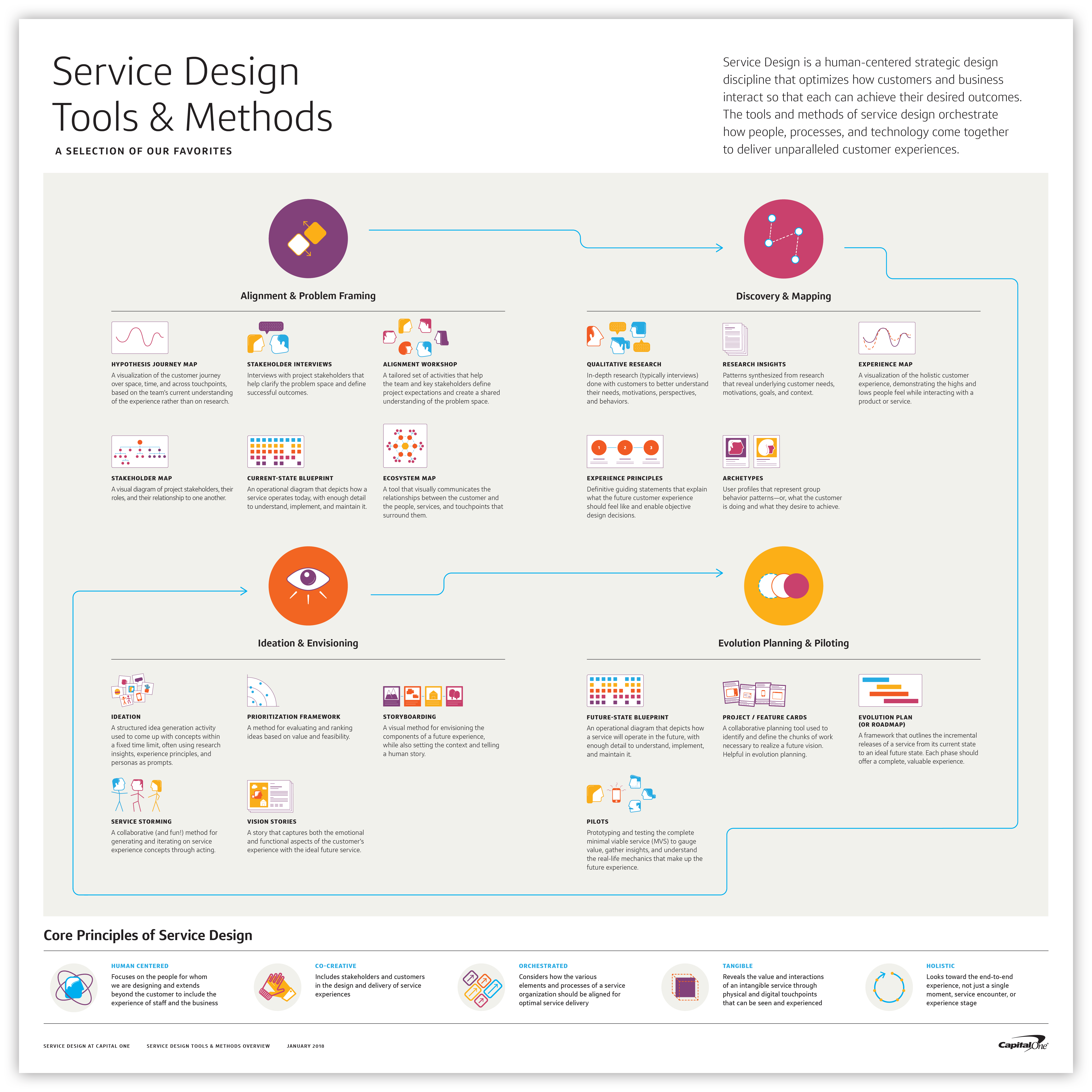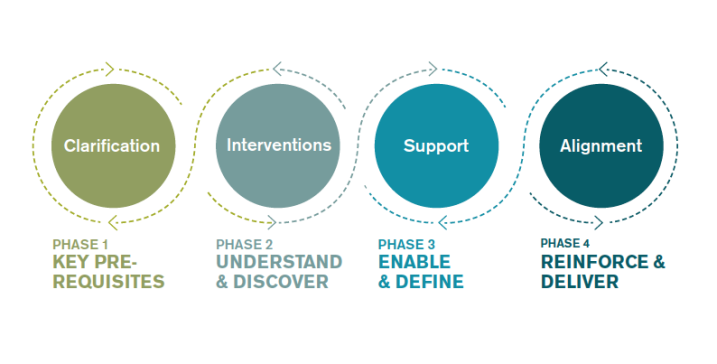A Comprehensive Guide for Modern Practitioners
One of the hardest things ever is finding myself at a meeting, dinner, or taking a cup of coffee at Starbucks, struggling to explain my job as a service designer to a curious seatmate.
Today, the challenge remains—not because the discipline is obscure, but because its scope is vast. Service Design isn’t just about creating pretty interfaces; it’s a human-centered strategic practice that orchestrates people, processes, and technology to deliver seamless customer experiences.
At Capital One, they have spent years scaling this discipline internally, developing toolkits like their Service Blueprinting Guide and Experience Mapping Framework.
This article unpacks the tools, methods, and principles that define service design, offering actionable insights for practitioners and stakeholders alike.
What Is Service Design?
Service design is the art of aligning business goals with customer needs through intentional orchestration of touchpoints. It borrows from UX design, systems thinking, and behavioral psychology, but its uniqueness lies in its holistic lens. As Marc Stickdorn, co-author of This Is Service Design Doing, notes:
“Service design is what happens when you design experiences that span time and multiple channels.”
Key objectives include:
- Eliminating friction in customer journeys.
- Aligning internal stakeholders around shared goals.
- Balancing feasibility, viability, and desirability.
The Service Design Process: Phases and Tools
Based on Capital One’s framework, service design projects typically follow four phases: Alignment & Problem Framing, Discovery & Mapping, Envisioning & Prototyping, and Implementation & Governance. Let’s explore each phase and its associated tools.
Phase 1: Alignment & Problem Framing
Before diving into solutions, teams must align on the problem’s scope and stakeholders.
- Stakeholder Mapping
A visualization of all actors involved in a service—customers, employees, partners—and their relationships. Tools like Miro’s Stakeholder Map Template help teams identify influencers and decision-makers. - Problem Statement Workshops
Collaborative sessions to reframe business challenges into human-centered opportunities. IDEO’s Design Kit offers frameworks like “How Might We” questions to spark ideation. - Business Model Canvas
Popularized by Strategyzer, this tool (view here) clarifies value propositions, revenue streams, and cost structures.
Phase 2: Discovery & Mapping
This phase focuses on understanding user behaviors, pain points, and contexts.
- Customer Journey Mapping (CJM)
A visual narrative of a user’s interactions with a service across touchpoints. Forrester Research reports that companies using CJMs see 1.6x higher customer satisfaction. Use Smaply for dynamic mapping. - Service Blueprinting
A diagram that layers customer actions, frontstage/backstage processes, and support systems. NN/g’s guide to service blueprints is a must-read. - Ethnographic Research
Observing users in their natural environments. Tools like dscout enable remote diary studies and in-the-moment insights.
Phase 3: Envisioning & Prototyping
Here, teams ideate and test future-state experiences.
- Co-Creation Workshops
Involve stakeholders in designing solutions. LEGO® Serious Play® (learn more) is a tactile method for unlocking creativity. - Experience Prototyping
Simulate services using role-playing or digital tools. Airbnb’s famous “Snow White” prototyping approach is a stellar example. - Concept Testing
Validate ideas early with low-fidelity prototypes. Use Figma for clickable mockups or InVision for feedback loops.
Phase 4: Implementation & Governance
Ensuring solutions scale sustainably.
- Roadmapping
Prioritize initiatives with tools like Productboard or Aha!. - Governance Frameworks
Define decision-making processes and metrics. The UK Government’s Service Standard offers a robust template. - Continuous Improvement
Adopt agile retrospectives and tools like Jira to iterate post-launch.
Core Principles of Service Design
- Human-Centered Focus
Prioritize empathy. Use tools like Empathy Maps to crystallize user needs. - Co-Creation
Involve stakeholders at every stage. IBM’s Enterprise Design Thinking framework emphasizes “multidisciplinary teams.” - Holistic Governance
Align siloed teams. The Service Design Network’s principles stress cross-functional collaboration. - End-to-End Orchestration
Map all touchpoints, as seen in McDonald’s digital-physical integration.
Case Studies: Service Design in Action
- Starbucks Mobile Order & Pay: By blueprinting the in-store/off-premise journey, Starbucks reduced wait times by 25% (source).
- NHS Digital (UK): Using CJMs, they streamlined patient onboarding, cutting form-filling time by 40% (case study).
Conclusion: The Future of Service Design
As services grow more complex, tools like AI-driven journey analytics (e.g., Qualtrics) will redefine the field. Yet, the core remains unchanged: designing for people, not just profits.
For further learning, explore:
- Download the poster here.
- Books: This Is Service Design Doing (link)
- Courses: IDEO U’s Service Design Course
- Communities: Service Design Network
Service design isn’t a trend—it’s the backbone of modern customer-centricity. Whether you’re on a plane or in a boardroom, these tools will help you navigate the journey.


